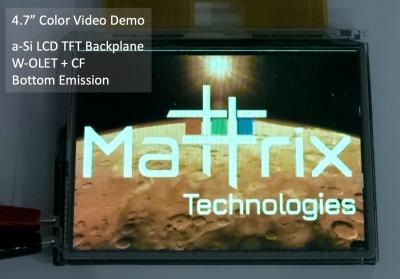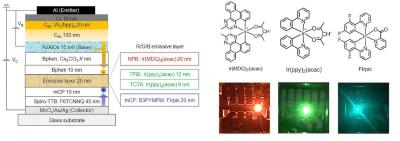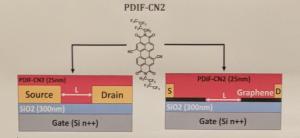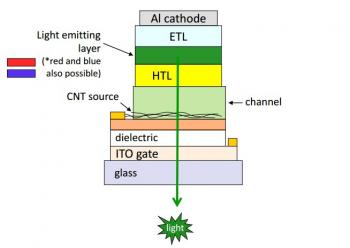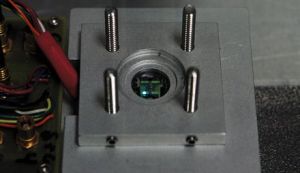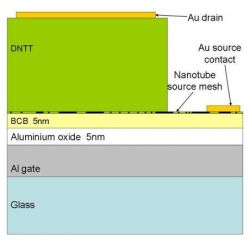OLETs used to create highly compact and cost-effective plasmonic optical sensor system
Researchers from Europe, working with funding from the EU research program at the MOLOKO project, developed a new plasmonic sensor system that integrates an organic light-emitting transistor (OLET), an organic photo-diode (OPD), and a nanostructured plasmonic grating (NPG) all in the same device.
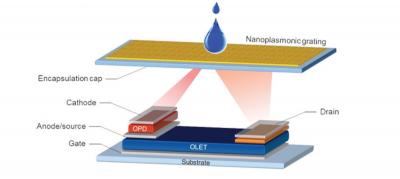
The researchers say that this design enables to create cost-effective and highly miniaturized optical sensors based on the optics-less plasmonic system. The researchers further say that the potential of OLETs, as planar multielectrode devices with inherent micrometer-wide emission areas, offers the incorporation of the light-emitting and light-detection modules together at unprecedented lateral proximity.
